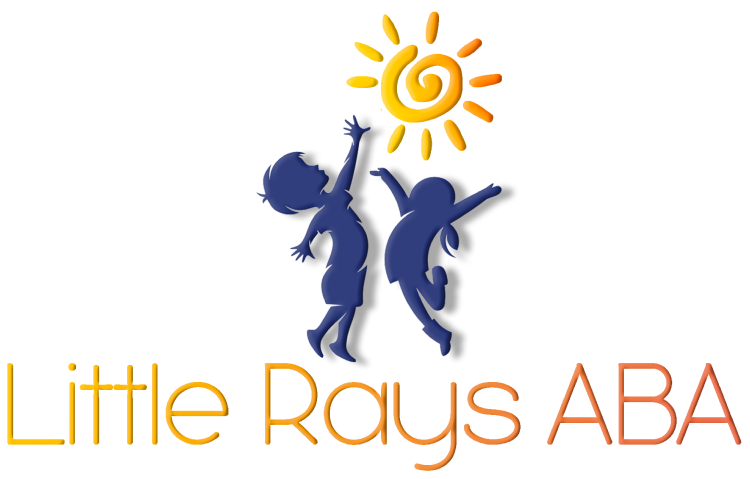Autism and OCD Comorbidity: Diagnosis, Treatment, and Real-Life Strategies
When autism and OCD show up together, it can be tough to know where one ends and the other begins. As an ABA therapist, I’ve seen how confusing and overwhelming this overlap can be for parents trying to get the right diagnosis and support. Autism and OCD comorbidity isn’t just a double diagnosis—it’s a unique blend that needs careful, compassionate understanding.
I remember working with an 11-year-old who was already diagnosed with autism. His parents came to me confused by his growing anxiety around numbers and routines—he had to check the clock exactly seven times before bedtime. It wasn’t just a preference; it was something he felt had to happen. We discovered that alongside autism, he was also experiencing OCD. Once we understood that, his whole care plan shifted—and so did his progress.
Understanding Autism and OCD Comorbidity
What is Autism?
I work with many individuals on the autism spectrum, and one thing I’ve learned is that no two people with Autism Spectrum Disorder (ASD) are alike. Autism is a developmental condition that primarily affects social interaction, communication, and behavior.
You might see one child who hyper-focuses on trains and another who has trouble managing everyday transitions. Some individuals need significant support in daily life, while others live independently but may still struggle with sensory sensitivities or social cues.
Early intervention can make a world of difference in helping individuals develop critical life skills, which is why understanding these behaviors is so important.
What is OCD?
Obsessive-Compulsive Disorder (OCD), on the other hand, is a mental health condition where individuals experience persistent, intrusive thoughts (obsessions) and feel driven to perform repetitive behaviors (compulsions) to ease their anxiety.
I’ve worked with clients who need to wash their hands dozens of times a day, or who must check locks repeatedly before leaving the house. OCD can be mild or very disruptive, and like autism, it exists on a spectrum.
Exploring Comorbidity
Comorbidity simply means that two conditions show up together in the same individual. In my experience, autism and OCD often intersect in complex ways. People with autism are more likely to develop OCD than the general population, and when the two conditions coexist, it can make both diagnosis and treatment more challenging.
That’s why understanding this overlap—known as autism and OCD comorbidity—is so essential for clinicians and families alike.
Prevalence and Diagnosis
Statistics on Autism and OCD Comorbidity
Let’s talk numbers for a moment, because prevalence matters. Understanding how common this comorbidity is can shape how we approach it in therapy and education.
Research shows that while about 1–2% of the general population is
diagnosed with autism, 17–37% of those individuals also meet the criteria for OCD. That’s a significant portion—and it tells us we need to be especially vigilant when assessing behaviors that might not be “just autism.”
| Condition | Prevalence Rate (%) | Population |
|---|---|---|
| Autism Spectrum Disorder (ASD) | 1–2% | General population |
| OCD in individuals with ASD | 17–37% | ASD population |
Note: Prevalence rates represent estimated ranges from epidemiological studies
Challenges in Identifying Both Conditions
Here’s where things get tricky: autism and OCD can look very similar on the surface. As a therapist, I often get asked, “Is this repetitive behavior a sensory-seeking action or a compulsion?” And honestly, sometimes it takes multiple sessions and input from other professionals to tell.
For example, a child on the spectrum may line up toys because they enjoy the visual symmetry—that’s a common autistic trait. But another child might feel intense anxiety if they don’t line things up “just right,” which is more indicative of OCD. The key is looking at why the behavior is happening and whether it’s serving a sensory, emotional, or anxiety-driven function.
This diagnostic overlap can be overwhelming for families, and that’s why comprehensive evaluations by experienced professionals are absolutely crucial.
Shared Characteristics
Overlapping Symptoms of Autism and OCD
When working with children and teens who have both autism and OCD, I often see patterns that reflect both conditions simultaneously. Some of the most common overlapping behaviors include:
- Rigidity in Thinking: Many of my clients resist change—whether it’s a schedule shift or a different brand of cereal. This rigidity is common in both autism and OCD.
- Repetitive Behaviors: You might see stimming behaviors like hand-flapping in autism or ritualistic actions like checking and rechecking in OCD.
- Difficulty with Social Interactions: Social anxiety can stem from not understanding social rules (autism) or fear of making a mistake (OCD).
- Obsessive Interests: A child might develop an intense interest in dinosaurs (autism), while another might be consumed with thoughts about germs or harm (OCD).
These overlaps often lead to confusion. That’s why in my assessments, I always recommend a holistic view—looking not just at the behavior, but at the emotions and motivations behind it.
Impact on Behavior and Daily Functioning
When autism and OCD occur together, the challenges can be more intense and layered. I’ve seen how this combination can make even small transitions feel monumental for a child or teen.
Some of the most common struggles I encounter include:
- Increased Anxiety: Obsessive thoughts paired with autistic stress responses can amplify emotional dysregulation.
- Challenges with Routine: Rigid thinking from both autism and OCD can create frustration when plans shift—even slightly.
- Social Withdrawal: Anxiety from OCD and difficulty with social cues in autism often lead to isolation.
- Academic or Work Difficulties: Persistent intrusive thoughts and
sensory sensitivities can derail focus, performance, and confidence.
Understanding these behaviors helps us build more targeted support plans. In my practice, I focus not just on reducing behaviors but on building coping skills and emotional resilience.
Treatment Approaches
Behavioral Therapies
In my experience, behavioral therapy is the cornerstone of effective support for individuals with autism and OCD. Here are a few evidence-based therapies I regularly recommend:
- Cognitive Behavioral Therapy (CBT): Especially helpful for treating OCD. It teaches clients how to challenge irrational thoughts and reduce compulsive actions.
- Exposure and Response Prevention (ERP): A form of CBT specifically for OCD. It gently exposes individuals to anxiety triggers without letting them engage in their compulsions. This is hard work but often very effective.
- Applied Behavior Analysis (ABA):
ABA therapy is particularly effective for autism. We use it to teach communication, social skills, and daily living skills—and it can also be helpful in managing certain OCD behaviors through reinforcement strategies.
Medication Options
Sometimes therapy alone isn’t enough. I work closely with psychiatrists when a medication evaluation is appropriate. The most common medications used include:
- Selective Serotonin Reuptake Inhibitors (SSRIs): These are the go-to meds for OCD symptoms. Medications like fluoxetine or sertraline can reduce the intensity of obsessions and compulsions.
- Antipsychotic Medications: Occasionally, for more severe symptoms or co-occurring conditions, these may be used alongside SSRIs.
Of course, every child and adult responds differently to medication, so close monitoring and regular check-ins are a must.
Considerations for Treatment Planning
When I create a treatment plan, I always emphasize three things:
- Individualization: No cookie-cutter plans here. Every person is different, and their therapy should reflect that.
- Ongoing Monitoring: We constantly adjust goals and strategies based on progress—or new challenges.
- Family Involvement: Families are the front-line support system. Training and involving them in therapy makes a huge difference.
When a multidisciplinary team works together—therapists, psychologists, doctors, and educators—the results are much more holistic and effective.
Supporting Individuals with Autism and OCD
Building Supportive Environments
Creating an environment that supports both autism and OCD isn’t just helpful—it’s essential. In my practice, I help families and educators set up:
- Structured Routines: Predictability eases anxiety.
- Safe Spaces: Quiet areas for sensory breaks or calming down.
- Positive Reinforcement: Encouraging progress, not perfection.
- Clear Communication: Visual aids, simplified language, and consistency help reduce confusion.
Strategies for Managing Symptoms
Here are a few approaches I regularly use with my clients:
- ABA Techniques: Tailored to the individual’s developmental level and communication style.
- Mindfulness and Grounding: Breathing techniques and sensory activities can help regulate big emotions.
- Social Skills Training: Especially important when OCD-related anxiety affects relationships.
- Visual Supports: Social stories, charts, and visual schedules support predictability and understanding.
Importance of Professional Guidance
You don’t have to navigate this alone. In my experience, the best outcomes come from collaborative care. That includes:
- Individualized Treatment Plans: Customized based on symptoms, age, and family dynamics.
- Regular Progress Tracking: Data helps us see what’s working and what needs to change.
- Empowered Families: Educated, confident caregivers make all the difference.
Looking to the Future
Research and Advancements
The good news? We’re learning more every year. Ongoing research is uncovering the neurological, genetic, and environmental links between autism and OCD. Tools like fMRI and PET scans are helping scientists explore how these disorders function in the brain—offering hope for better, more targeted treatments in the future.
Hope for Better Understanding and Treatment Options
Personalized care is the way forward. I’m excited by emerging therapies that treat both autism and OCD in tandem—rather than separately. CBT protocols are being adapted for individuals with both conditions, and professionals are starting to recognize the importance of integrated care.
We’re also seeing more emphasis on caregiver training and professional development, which means more support for families and better-informed clinicians. Collaboration between researchers, healthcare providers, and advocates is key to driving change.
By understanding autism and OCD comorbidity, we can create more compassionate, comprehensive, and effective support systems. If you're a parent, teacher, or provider working with someone facing both of these challenges—you're not alone. With the right tools, strategies, and mindset, there’s a clear path forward.
At Little Rays ABA, we specialize in compassionate, evidence-based therapy that’s tailored to each child’s unique needs, including those with dual diagnoses like autism and OCD.
Let us help you create a clear, effective plan that leads to real progress.
📞 Call us at 305-306-1443 or 📧 email aba@littleraysaba.com to schedule a consultation today.
FAQs
What does it mean to have autism and OCD comorbidity?
Autism and OCD comorbidity means that an individual has both Autism Spectrum Disorder (ASD) and Obsessive-Compulsive Disorder (OCD) at the same time, which can result in overlapping symptoms and unique treatment needs.
How can ABA therapy help with autism and OCD comorbidity?
ABA therapy focuses on behavior modification and skill-building, which can help manage symptoms related to both autism and OCD, especially when tailored to the individual's needs.
Is it common for children with autism to also have OCD?
Yes, research suggests that up to 30% of individuals with autism may also experience symptoms of OCD, making early diagnosis and personalized interventions important.
Sources:
- https://www.autismspeaks.org/expert-opinion/ocd-and-autism
- https://iocdf.org/autism/ocd-and-autism/
- https://aane.org/autism-info-faqs/library/understanding-the-intersection-of-autism-and-ocd/
- https://pmc.ncbi.nlm.nih.gov/articles/PMC11497754/
- https://www.medicalnewstoday.com/articles/ocd-vs-autism
- https://www.thetransmitter.org/spectrum/untangling-ties-autism-obsessive-compulsive-disorder/
Related Posts





